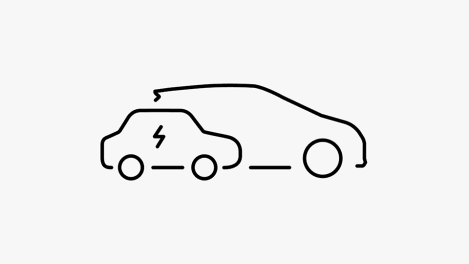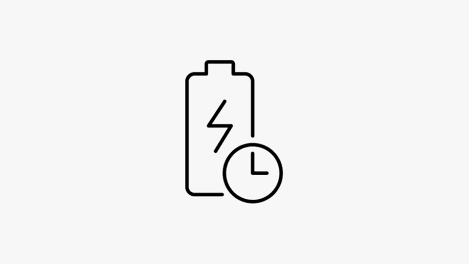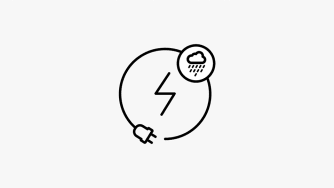













NEARLY INSTANT TORQUE1
Significant torque gives you a new spin on acceleration
CONFIDENT HANDLING
Generally, the battery is positioned to enable a near 50/50 weight distribution of the vehicle and a low center of gravity. Together, this results in handling that is capable and responsive.
SMOOTH QUIET OPERATION2
Electric vehicles are nearly silent due to their lack of engine noise. Sounds typically generated are from wind resistance and the tires at moderate to higher speeds. EVs have exterior sounds for pedestrian awareness. Some have unique Electric Vehicle Sound Enhancements to elevate the in-cabin drive experience.
ZERO TAILPIPE EMISSIONS
Electric vehicles do not burn fuel, meaning they produce zero tailpipe emissions. More electric vehicles on the road means fewer emissions.
![]()
NEARLY INSTANT TORQUE1
Significant torque gives you a new spin on acceleration
![]()
CONFIDENT HANDLING
Generally, the battery is positioned to enable a near 50/50 weight distribution of the vehicle and a low center of gravity. Together, this results in handling that is capable and responsive.
![]()
SMOOTH QUIET OPERATION2
Electric vehicles are nearly silent due to their lack of engine noise. Sounds typically generated are from wind resistance and the tires at moderate to higher speeds. EVs have exterior sounds for pedestrian awareness. Some have unique Electric Vehicle Sound Enhancements to elevate the in-cabin drive experience.
![]()
ZERO TAILPIPE EMISSIONS
Electric vehicles do not burn fuel, meaning they produce zero tailpipe emissions. More electric vehicles on the road means fewer emissions.



MYTH: EVS ARE COSTLY TO PURCHASE, MAINTAIN, AND CHARGE.
In general, switching to an EV becomes more cost-efficient3 over time. EVs are different than internal combustion vehicles and tend to require less maintenance, as there are fewer moving parts that need to be regularly inspected or changed, such as belts, engine oil, and filters.
MYTH: EVS ARE SMALL CARS ONLY.
Today, GMC BEV utilities include the powerful Hummer EV SUT as well as the Hummer EV SUV.
MYTH: EVS HAVE MINIMAL RANGE.4
A 2022 New Car Buyer Study (NCBS) was conducted by the International Research Consultants (IRC) with a sample of 4,991 drivers in UAE and 6,054 drivers in KSA5. The research shows that the average daily commute in the U.A.E. is 50-59 km by about 17.1% of the sample size (highest percentage of sample) and 13.7% driving 100-109km daily on average (second highest percentage of sample).
For KSA the research shows that about 16.4% of the sample size (highest percentage of sample) have an average daily commute of 30-39 km and about 13.1% have an average daily commute of 40-49 km (second highest percentage of sample). Fortunately, GM EVs have an overall range well above these average daily commutes




MYTH: EVS TAKE TOO LONG TO CHARGE.6
While EVs do take longer to fuel than Internal Combustion Engine (ICE) powered vehicles, with home charging, this can be as seamless as EV owners enjoy waking to a “full tank” and eliminating the hassle of petrol station visits. Many petrol stations are installing DC Fast Charging that enables EV owners to top-up their charge.
MYTH: PUBLIC CHARGING IS HARD TO FIND.
We are in the beginning stages of EV adoption. In the next few years, more and more public chargers will be added across the region. In reality, most EV charging might take place at home. However, it is good to have more public chargers but may not be critical.
MYTH: EV BATTERIES DETERIORATE SIGNIFICANTLY OVER TIME7.
Lithium-Ion batteries are designed with protective measures to ensure longevity of battery life. Most electric vehicles will enjoy a long useful battery life.
MYTH: IT’S NOT SAFE TO CHARGE AN EV IN THE RAIN.
Charging stations must be weatherproof designed to protect both the car and its occupants from electrical shock. Electric vehicle chargers are tested by OSHA-certified laboratories and must meet stringent safety standards set by NEMA, the Society of automotive Engineers, and Underwriter Labs (UL). Experts assert that it is safe to charge in the rain when using properly-installed equipment and following manufacturer recommended charging guidelines.

MYTH: EVS ARE COSTLY TO PURCHASE, MAINTAIN, AND CHARGE.
In general, switching to an EV becomes more cost-efficient3 over time. EVs are different than internal combustion vehicles and tend to require less maintenance, as there are fewer moving parts that need to be regularly inspected or changed, such as belts, engine oil, and filters.

MYTH: EVS ARE SMALL CARS ONLY.
Today, GMC BEV utilities include the powerful Hummer EV SUT as well as the Hummer EV SUV

MYTH: EVS HAVE MINIMAL RANGE.4
A 2022 New Car Buyer Study (NCBS) was conducted by the International Research Consultants (IRC) with a sample of 4,991 drivers in UAE and 6,054 drivers in KSA5. The research shows that the average daily commute in the U.A.E. is 50-59 km by about 17.1% of the sample size (highest percentage of sample) and 13.7% driving 100-109km daily on average (second highest percentage of sample).
For KSA the research shows that about 16.4% of the sample size (highest percentage of sample) have an average daily commute of 30-39 km and about 13.1% have an average daily commute of 40-49 km (second highest percentage of sample). Fortunately, GM EVs have an overall range well above these average daily commutes

MYTH: EVS TAKE TOO LONG TO CHARGE.6
While EVs do take longer to fuel than Internal Combustion Engine (ICE) powered vehicles, with home charging, this can be as seamless as EV owners enjoy waking to a “full tank” and eliminating the hassle of petrol station visits. Many petrol stations are installing DC Fast Charging that enables EV owners to top-up their charge.

MYTH: PUBLIC CHARGING IS HARD TO FIND.
We are in the beginning stages of EV adoption. In the next few years, more and more public chargers will be added across the region. In reality, most EV charging might take place at home. However, it is good to have more public chargers but may not be critical.

MYTH: EV BATTERIES DETERIORATE SIGNIFICANTLY OVER TIME7.
Lithium-Ion batteries are designed with protective measures to ensure longevity of battery life. Most electric vehicles will enjoy a long useful battery life.

MYTH: IT’S NOT SAFE TO CHARGE AN EV IN THE RAIN.
Charging stations must be weatherproof designed to protect both the car and its occupants from electrical shock. Electric vehicle chargers are tested by OSHA-certified laboratories and must meet stringent safety standards set by NEMA, the Society of automotive Engineers, and Underwriter Labs (UL). Experts assert that it is safe to charge in the rain when using properly-installed equipment and following manufacturer recommended charging guidelines.
DISCLAIMERS
1. Actual output of torque may vary based on several factors such as vehicle usage, battery condition, temperature, driving style etc.
2. Actual level of quietness may vary based on several factors such as driving style, drive terrain, battery condition, condition of tires, vehicle usage etc.
3. Actual cost of ownership may vary based on driving style, frequency of charging, type of charger used, vehicle usage etc.
4. Actual usable EV range may vary by several factors such as driving style, battery condition, frequency of charging, type of charging used, temperature, prolonged exposure to direct heat etc.
5. The stated values of daily commutes in UAE and KSA are averages of the overall research study sample size. The stated values of average daily commute are not exact representations of every individual residing in the UAE and KSA.
6. Charging time may vary based on several factors such as driving style, battery condition, vehicle capacity, temperature, vehicle usage, power supply etc.
7. EV battery life may be affected by several factors such as driving style, frequency of charging, type of charging used, exposure to direct heat etc.


